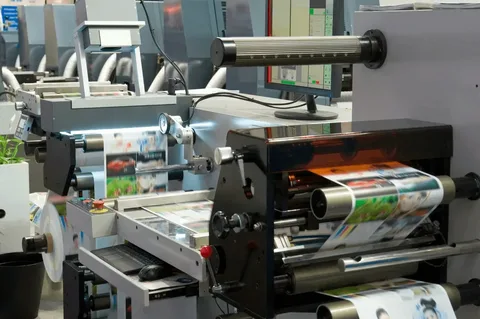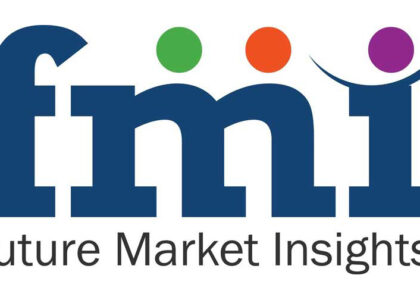
The global printing machinery market size is projected to reach US$ 22,814.9 million in 2023. By 2033, the market is set to generate US$ 38,572.8 million, meanwhile expanding at 4.7% CAGR.
This significant uptrend is attributed to technological advancements, increasing demand for efficient printing solutions across various industries, and the evolving landscape of digital and offset printing. The market’s persistent growth highlights its pivotal role in meeting the diverse and evolving needs of businesses for high-quality and advanced printing capabilities.
The increasing need for packaging converters and consumer brands to customize their marketing communications has opened up significant avenues for the digital printing industry. This trend has simultaneously generated expansive opportunities for digital ink manufacturers within the packaging market, highlighting a symbiotic relationship where the demand for personalized printing solutions propels advancements in digital ink technologies.
Request Sample Report: https://www.futuremarketinsights.com/reports/sample/rep-gb-5833
By the conclusion of 2033, India is poised to emerge as a substantial stakeholder in the Asia Pacific printing machinery market, with a projected growth rate of 7.6% CAGR during the forecast period. The burgeoning expansion and increased presence of manufacturing value-added industries in the country are anticipated to unveil lucrative opportunities for printing machinery manufacturers, paving the way for heightened revenue generation in the Indian market. Furthermore, insights from FMI highlight a consistent upward trend in the demand for sustainable packaging in India over the past decade, indicating a growing inclination towards eco-friendly and environmentally responsible printing solutions in the region.
Market Drivers:
- Technological Advancements: Ongoing technological developments, such as digital printing and 3D printing, can drive the demand for advanced printing machinery that offers improved speed, quality, and efficiency.
- Rise in Packaging Industry: The growing packaging industry, driven by e-commerce, retail, and food and beverage sectors, often requires specialized printing solutions. This can boost the demand for printing machinery used in packaging applications.
- Increased Customization Demands: As businesses and consumers seek more personalized and customized products, there is a rising demand for printing machinery capable of handling variable data and short print runs efficiently.
- Environmental Concerns: The shift towards eco-friendly and sustainable printing practices can drive the adoption of printing machinery that utilizes environmentally friendly inks and materials.
- Growth in Advertising and Promotion: The advertising and promotional activities across various industries contribute to the demand for printing machinery, especially for large-format and high-quality prints.
Buy Now/Purchase: https://www.futuremarketinsights.com/checkout/5833
Market Restraints:
- Digitalization and Paperless Trends: The increasing shift towards digital media and paperless communication can pose a challenge to traditional printing machinery, particularly in areas where electronic formats are preferred over printed materials.
- High Initial Costs: The upfront costs associated with acquiring advanced printing machinery, especially for technologies like 3D printing or high-end digital printing, can be a barrier for small and medium-sized enterprises (SMEs).
- Supply Chain Disruptions: Global events, such as pandemics or geopolitical tensions, can disrupt the supply chain of printing machinery components, leading to delays in production and delivery.
- Regulatory Compliance: Stringent regulations related to environmental impact, safety, and quality standards can pose challenges for manufacturers in the printing machinery industry, requiring compliance and potentially impacting costs.
- Market Saturation: In mature markets, saturation can be a limiting factor for growth, as most potential customers may already have the necessary printing equipment, reducing the immediate demand for new machinery.
Key Players:
- Agfa-Gevaert Group,
- Océ Imagistics, Inc.,
- Bobst Group SA,
- Fujifilm Holdings Corporation,
- Heidelberger Druckmaschinen AG,
- Hewlett Packard Enterprise Company,
- Koenig & Bauer AG,
- Komori Corporation,
- Apex Machine Company Inc., and
- Cerutti Group
Recent Developments:
- In December 2021, Fujifilm Holdings Corporation unveiled its first Revoria Press PC 1120 Production printer in India. This launch is an outcome of the company’s collaboration with its partner Insight Print Communication Pvt. Ltd.
- In December 2021, Komori Corp. and Spectrum Printing captured the award for best folding carton case study in the digital packaging summit. The summit was held at Ponte Vedra Beach, Florida in 2021.
- In October 2021, HP Inc. launched all-around ENVY inspire home printer, designed for a family’s hybrid lifestyle. It is a significantly versatile home printer manufactured by the company. It is made while keeping sustainability in mind & contains over 45% recycled plastic content.
Paper & Paperboard is a Preferred Substrates in the Printing Machinery Industry
The widespread use of paper and paperboard in commercial printing, books, newspapers, magazines, packaging, and labeling is driven by its advantageous characteristics, including durability, recyclability, and packaging convenience. Globally, there has been a substantial surge in demand for paper and paperboard substrates, leading to a transformative impact on the packaging industry. The ease of storage, handling, and usage has significantly influenced the preference for paper and paperboard substrates. Consequently, the utilization of paper and paperboard substrates in printing machinery is anticipated to witness a 1.4-fold increase by the conclusion of 2033.
Key Segmentations:
By Product Type:
- Offset Lithography
- Flexography
- Screen
- Gravure
- Letterpress
- Digital
- Others
By Substrate Type:
- Plastic
- Paper & Paperboard
- Metal
- Other Substrates (Wood, Glass, Fabric)
By Application:
- Packaging & Labels
- Books
- Newspaper & Magazines
- Commercial Printing & Others
- Advertising
- Office Stationaries
By End Use:
- Commercial
- Publication
- Packaging
About Future Market Insights (FMI)
Future Market Insights, Inc. (ESOMAR certified, recipient of the Stevie Award, and a member of the Greater New York Chamber of Commerce) offers profound insights into the driving factors that are boosting demand in the market. FMI stands as the leading global provider of market intelligence, advisory services, consulting, and events for the Packaging, Food and Beverage, Consumer Technology, Healthcare, Industrial, and Chemicals markets. With a vast team of over 400 analysts worldwide, FMI provides global, regional, and local expertise on diverse domains and industry trends across more than 110 countries.
Contact Us:
Future Market Insights Inc.
Christiana Corporate, 200 Continental Drive,
Suite 401, Newark, Delaware – 19713, USA
T: +1-845-579-5705
For Sales Enquiries: sales@futuremarketinsights.com
Website: https://www.futuremarketinsights.com
LinkedIn| Twitter| Blogs | YouTube




